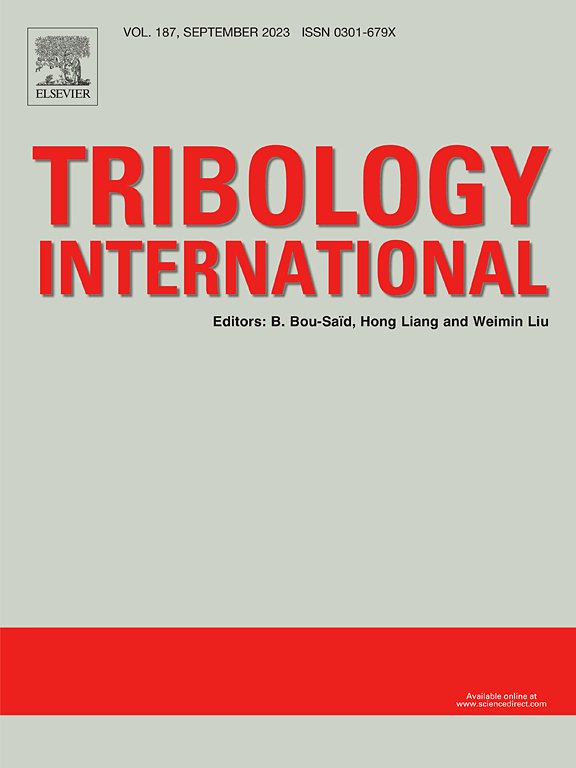Wear due to fatigue initiation
IF 6.1
1区 工程技术
Q1 ENGINEERING, MECHANICAL
引用次数: 0
Abstract
Persson and coauthors have recently proposed an extension of the Rabinowicz idea for fatigue wear at different scales of roughness, where Paris’ crack growth law is applied to ”potential” wear particles. However, Persson’s theory suffers from the fact that initial size of defects is unknown and fatigue life is not entirely due to propagation, so we investigate a different formulation, where a law for initiation of cracks is used for a specimen with initial roughness of engineering interest. We find that results (in particular dependence on amplitude of roughness, and on friction coefficient) are qualitatively similar to the original Persson and coworkers’ theory, but may differ substantially quantitatively. As the assumption of a constant fatigue threshold may be incorrect for short cracks, both fatigue limit and fatigue threshold are made dependent of crack size, using the Murakami formulation as one of the possible alternatives. This makes wear rate be sensitive to the fine scale details of the roughness spectrum, which has an effect on increasing wear rate and small particles emission. The model seems to have qualitative trends in agreement with experiments, but obviously wear is a very complex phenomenon and many factors may be not captured.
求助全文
约1分钟内获得全文
求助全文
来源期刊

Tribology International
工程技术-工程:机械
CiteScore
10.10
自引率
16.10%
发文量
627
审稿时长
35 days
期刊介绍:
Tribology is the science of rubbing surfaces and contributes to every facet of our everyday life, from live cell friction to engine lubrication and seismology. As such tribology is truly multidisciplinary and this extraordinary breadth of scientific interest is reflected in the scope of Tribology International.
Tribology International seeks to publish original research papers of the highest scientific quality to provide an archival resource for scientists from all backgrounds. Written contributions are invited reporting experimental and modelling studies both in established areas of tribology and emerging fields. Scientific topics include the physics or chemistry of tribo-surfaces, bio-tribology, surface engineering and materials, contact mechanics, nano-tribology, lubricants and hydrodynamic lubrication.
 求助内容:
求助内容: 应助结果提醒方式:
应助结果提醒方式:


